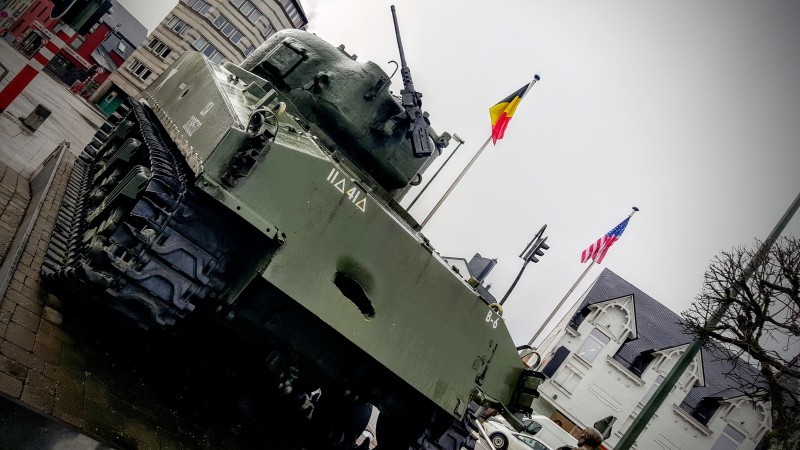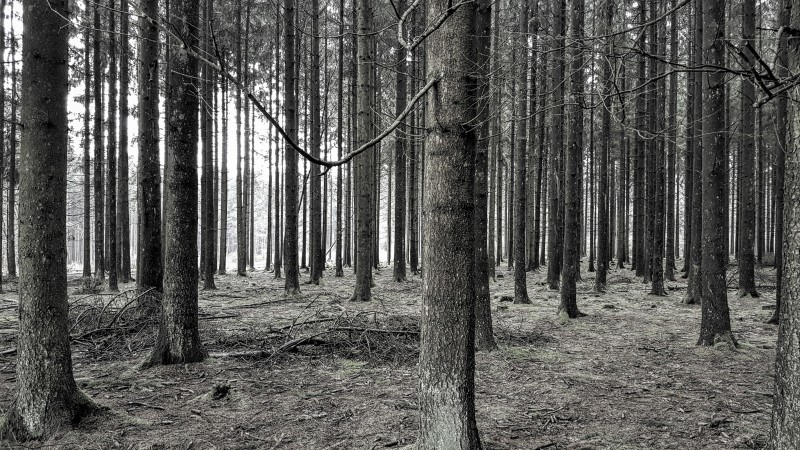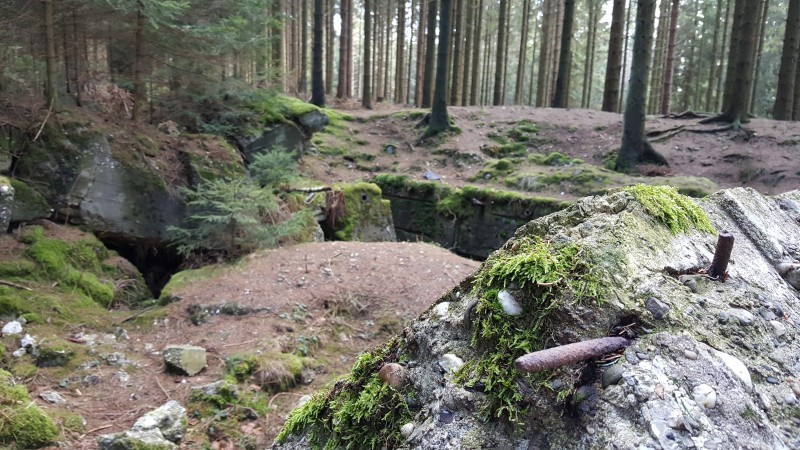Last updated: 25 June 2023
Originally published in February 2016. Liberation Route Europe (LRE) is an international remembrance trail that connects important milestones from modern European history to provide an experience to follow the route taken by Allied Forces during the final phase of the Second World War.
The Liberation Route Europe is a powerful symbol of the path of freedom
– Janine Hennis-Plasschaert, The Dutch Minister of Defence
The Liberation Route Europe Foundation works with government organisations, universities, museums, veteran societies, commemorative events organisers, travel agents, tour operators and other tourism organisations in Western Europe and Poland, to bring together national perspectives on the liberation of Europe, to learn and share experiences and understanding, in order to create a unified awareness of the importance of freedom.
Our recent journey through history primarily focused on the city of Bastogne in Belgium and the Hurtgen Forest in Germany, the locations of some of the fiercest battles of World War II. To understand the significance of Bastogne and the Hurtgen Forest, a brief overview of the last years of World War II is required.
A Brief History
By late 1944, the German army was being squeezed between the Soviet Union on the East and the western Allied forces advancing from Normandy through Northern France, Belgium, and southern Netherlands.
There seemed to be only one option available for the German army, consolidate an imposing force and advance towards the port of Antwerp in Belgium to cut off the Allied supply line from the English Channel, split the Allied troop line in half, and with a convincing victory force the Allies to a peace treaty in favour of the Axis Powers.
This German offensive went by many names; the Allies called it the Ardennes Counteroffensive, the French named it The Battle of the Ardennes, and the Germans called it Operation Watch on the Rhine. Today we know it as The Battle of the Bulge.
The surprise attack was launched on 16 December 1944 and took the Allied Forces by surprise, resulting in the highest number of American casualties in any operation during World War II.
The landscape and environment where the battle was fought became a contributing factor to mass casualties, on both sides. The Ardennes area is blanketed with dense forests, steeps hills, and dramatic cliffs. Combine this difficult terrain with sub-zero temperatures and low-hanging clouds, which grounded Allied air support, and it becomes clear that this was hell on earth.
Whilst the attack was at first seemingly in the favour of the German forces, strong resistance in the northern region of Elsenborn Ridge and in the southern city of Bastogne prevented access to crucial roads required for a Germany victory.
The Siege of Bastogne, whilst it was part of the larger Battle of the Bulge, became an important example of American heroism in the face of insurmountable odds. The town of Bastogne never fell to Nazi Germany, an extraordinary outcome considering the Americans were outnumbered 5 to 1 with insufficient cold-weather gear in minus 18 degree conditions.
The resilience of the American forces combined with improved weather conditions allowed for bombing raids against the Nazi forces which ultimately led to a German retreat and Allied victory.
The Battle of the Bulge may be considered an Allied victory but at what cost; American casualties: 89 500, British casualties: 1 408, German casualties: 125 000. Casualty numbers include killed, wounded, and missing and captured.
There was another bloody and horrific battle which started before The Battle of the Bulge and continued after it, the Battle of the Hurtgen Forest. The reason why the two are closely linked is not only geographic but also because Hurtgen Forest was the staging area for the Ardennes Offensive and controlled access to the Rur Dam, a key focus for American strategists.
The Battle of Hurtgen Forest was the longest battle on German soil during World War II and is currently the single longest battle that the American military has ever fought.
Hurtgen Forest is a dense forested plain with steep cliffs, narrow paths and blind corners coupled with freezing temperatures and low-lying mist. The unforgiving natural landscape was made even more dangerous with hidden bunkers, landmines, barbed wire, machine guns, and mortar shells.
Whilst historians still argue today over whether the American advance through Hurtgen Forest had any merit, it does not change the fact that both American and German soldiers lost their lives in an astounding number. American casualties: 33,000. German casualties: 28,000. A number of casualties which increases to this day as remains are still discovered throughout Hurtgen Forest.
Next: The Siege of Bastogne
Now that you have some background information about the final year of World War II, let’s spend some time understanding The Siege of Bastogne, what it looks like today, and what to expect if you’re planning a visit.



